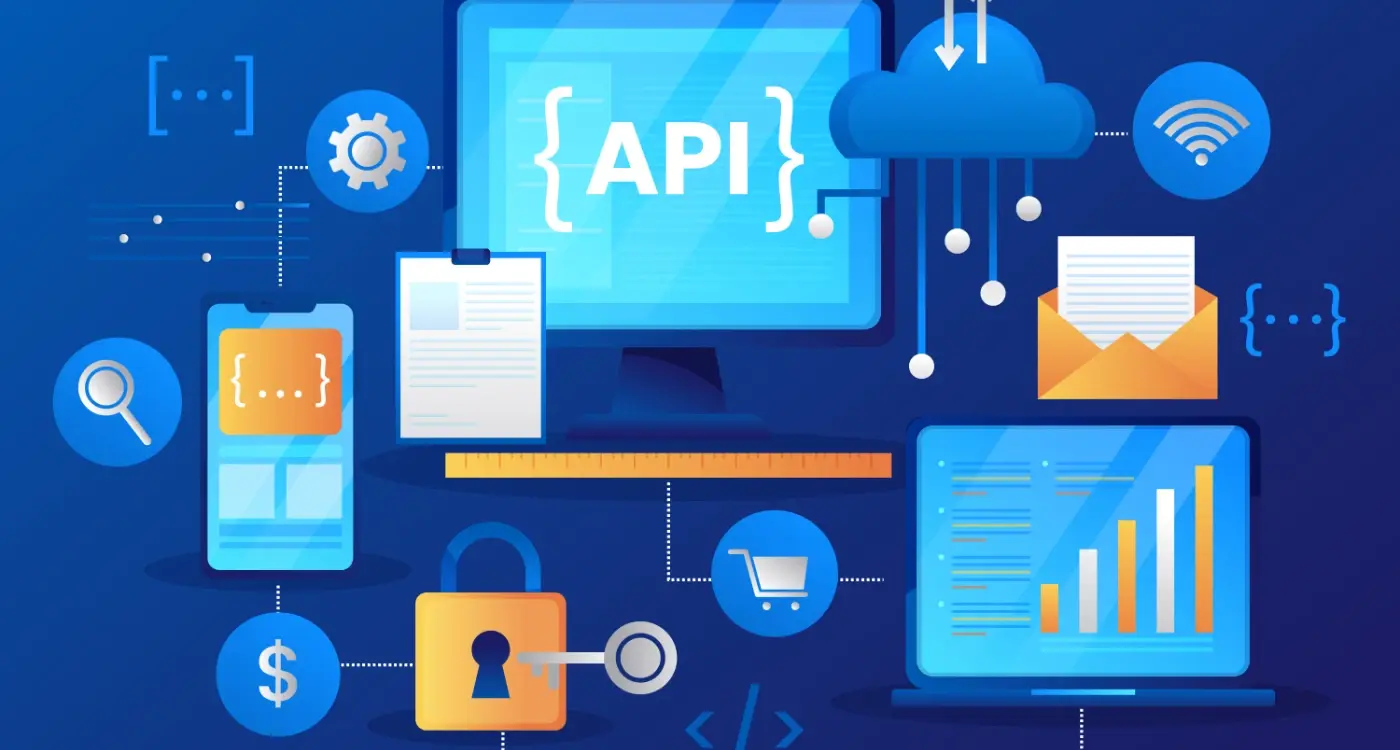How Do Third-Party Integrations Impact Your App Budget?
Apps that rely heavily on third-party integrations typically spend 40-60% more on development and ongoing costs than those built with minimal external dependencies. It's a figure that catches many app developers off guard—and honestly, it caught me off guard when I first started tracking these costs across our projects. You build what seems like a straightforward app, then suddenly you're paying monthly fees to five different services just to keep the thing running.
The thing is, third-party integrations have become absolutely necessary for modern mobile apps. Nobody expects you to build your own payment processing system or create a mapping service from scratch. Users want apps that connect to their existing accounts, sync their data, and work seamlessly with the services they already use. But here's what most people don't realise—every integration comes with its own pricing model, usage limits, and hidden costs that can seriously impact your budget.
The real cost of integrations isn't just the monthly subscription fees; it's the ongoing maintenance, compliance requirements, and the risk of vendor lock-in that can make or break your app's profitability.
I've seen teams launch apps thinking they've budgeted properly, only to discover their integration costs double when they hit certain usage thresholds. Or they find out that the "free tier" they've been using doesn't include the features their users actually need. The mobile app integration landscape changes constantly—APIs get updated, pricing models shift, and services get discontinued. Understanding these costs upfront isn't just about budgeting; it's about building a sustainable business that won't get blindsided by unexpected expenses down the road.
Understanding Integration Costs Before You Build
Here's the thing about third-party integrations—they're sneaky budget killers if you don't plan for them properly. I've seen teams estimate their app build at £50,000 only to discover that the payment gateway, mapping services, and social login features they want will add another £20,000 in ongoing costs; that's before they've even launched!
Most people think about integrations as one-off setup costs. Wrong. These services typically charge monthly fees based on usage, which means your costs grow as your app succeeds. A payment processor might charge 2.9% per transaction plus 30p—sounds reasonable until you're processing thousands of payments monthly.
The Real Cost Structure
Third-party services usually follow this pricing pattern:
- Initial setup and development time (usually 10-40 hours per integration)
- Monthly or annual subscription fees
- Usage-based charges that scale with your success
- Premium features locked behind higher pricing tiers
- Additional costs for compliance, security certifications, or enterprise features
What catches people off guard? The scaling costs. A mapping API might give you 10,000 free requests monthly, but once you hit 50,000 users checking locations daily, you're suddenly paying £300+ per month for something that felt "free" during development.
The smart approach is to research pricing tiers for every integration you're considering before you commit to building. Look at what happens when you hit 1,000 users, then 10,000, then 100,000. Some services become prohibitively expensive at scale—others actually get cheaper per user as you grow. Knowing this upfront lets you budget realistically and sometimes choose different providers that'll serve you better long-term.
Always factor integration costs into your monthly operating budget, not just your development budget. Trust me on this one!
Payment Processing and Financial APIs
Payment processing is where things get properly expensive, and honestly, it's caught more clients off guard than any other integration cost. I mean, everyone knows they'll pay transaction fees, but the hidden charges? That's where it gets messy.
Stripe charges 2.9% + 30p per successful card charge in the UK, which seems reasonable until you're processing thousands of transactions monthly. PayPal's slightly higher at 2.9% + 30p for domestic transactions, but their international fees can hit 4.4% + fixed fees. Apple Pay and Google Pay add another layer—whilst they don't charge merchants directly, you're still paying the underlying processor fees plus potential integration costs.
But here's where it gets tricky—PCI compliance isn't optional. If you're handling card data directly, you're looking at compliance costs that can range from £1,000 to £15,000 annually depending on your transaction volume. Most apps avoid this by using hosted payment pages or tokenisation, but that limits your design flexibility.
Always factor in chargeback fees (typically £15-25 per dispute) and failed payment retry costs when calculating your payment processing budget—they add up faster than you'd think.
Common Payment Integration Costs
- Stripe Connect for marketplace apps: 0.25% additional fee
- Recurring billing management: £15-50 monthly for services like Chargebee
- Multi-currency processing: Additional 1% on top of standard rates
- Instant payouts: 1.5% fee for same-day transfers
- ACH/bank transfer processing: 0.8% capped at £5 per transaction
Financial APIs like Plaid for bank connectivity cost around $0.60 per successful connection, whilst Open Banking APIs in the UK are technically free but require significant development time. The real killer? Failed payment handling and dunning management—services like GoCardless charge 1% for Direct Debit processing, but you'll need retry logic that can cost hundreds in development hours.
Health Data and Medical Integrations
Medical app integrations are honestly some of the most complex—and expensive—third-party connections you'll deal with. I mean, we're talking about people's health data here, which means every single integration needs to meet strict compliance standards. It's not just about connecting to an API; its about doing it safely and legally.
The big players in health data integration don't come cheap. Epic's MyChart API can cost anywhere from £15,000 to £50,000 annually depending on your usage volume, and that's before you factor in the development time needed to implement it properly. Cerner, Allscripts, and other electronic health record systems have similar pricing structures that can genuinely shock first-time health app developers.
HIPAA and GDPR Compliance Costs
But here's the thing—the API fees are just the start. Health apps need to be HIPAA compliant in the US and meet strict GDPR requirements in the UK and EU. This means additional security measures, encrypted data storage, audit trails, and regular compliance assessments. You're looking at an extra £20,000 to £80,000 in development costs just to meet these standards properly.
Wearable device integrations like Apple HealthKit or Google Fit are thankfully free to use, but they still require careful implementation to handle personal health data responsibly. The real costs come from ensuring your app can process and store this data securely whilst maintaining user privacy.
- Electronic health record APIs: £15,000-£50,000+ annually
- HIPAA/GDPR compliance implementation: £20,000-£80,000
- Medical device integrations: £5,000-£25,000 per device type
- Ongoing security audits: £8,000-£15,000 annually
Medical integrations require specialist knowledge that most general app developers simply don't have. Budget for working with compliance experts and healthcare-focused development teams—it'll save you from costly mistakes down the road.
Content Management and Media APIs
Right, let's talk about content and media APIs—this is where things can get expensive fast if you're not careful. I've seen plenty of projects where the media handling costs ended up being triple what the client expected, simply because nobody properly calculated the data usage patterns.
When you're dealing with image hosting, video streaming, or content delivery networks (CDNs), you're typically paying based on storage, bandwidth, and requests. A photo-sharing app might seem straightforward until you realise that each image upload could trigger multiple API calls: original storage, thumbnail generation, compression, and then delivery to potentially hundreds of viewers. That's not one API cost—that's four or five different charges per photo.
Video content is where budgets really take a hit. Services like Vimeo or Wistia charge based on storage and streaming bandwidth, but the real kicker is transcoding—converting videos into different formats for different devices. You might pay £0.02 per minute for transcoding, which sounds reasonable until you've got users uploading hours of content daily.
The content delivery costs can easily outstrip your development budget if you haven't planned for scale from day one
Here's something most people miss: content moderation APIs. If your app allows user-generated content, you'll likely need services to check for inappropriate images or text. These typically charge per item checked, and with active users, those micro-charges add up quickly. I always recommend building content quotas and compression into your app architecture early—it's much harder to optimise these costs after launch when users expect unlimited uploads.
Social Features and Communication Services
Social features can make or break your app budget, honestly. I've seen projects where clients thought adding "social login" would cost a few hundred quid, only to discover they needed custom user profiles, friend systems, and content moderation—suddenly we're talking thousands, not hundreds.
The basic stuff like Facebook and Google login? That's usually straightforward. But here's where it gets expensive: once users can connect socially, they expect to share content, send messages, and interact with each other. Each of these features requires backend infrastructure, real-time capabilities, and ongoing moderation costs.
Communication Features That Impact Your Budget
Real-time messaging is particularly costly because it requires persistent connections and dedicated server resources. I always tell clients that adding chat to their app isn't just a development cost—its an ongoing operational expense. Services like Twilio or SendBird can handle the heavy lifting, but you're looking at monthly fees based on usage.
- Basic social login (Facebook, Google, Apple) - £500-1,500 implementation
- In-app messaging systems - £2,000-8,000 plus monthly hosting costs
- Push notification services - £300-1,000 setup, then usage-based pricing
- Content sharing and media uploads - £1,000-3,000 plus storage costs
- User-generated content moderation - £2,000-5,000 plus ongoing review costs
What catches teams off guard is the moderation aspect. The moment users can post content or message each other, you need systems to prevent abuse. This means automated filtering tools, reporting mechanisms, and often human moderators. These costs compound over time as your user base grows.
Video calling features are even more expensive—expect £5,000-15,000 for implementation using services like Agora or Zoom SDK, plus significant monthly usage fees that scale with your active users.
Location Services and Mapping Costs
Right, let's talk about mapping and location services—because honestly, this is where I've seen more budget surprises than almost any other integration. You know what? Everyone thinks "oh, we'll just add a map, how expensive can it be?" Well, buckle up.
Google Maps is the obvious choice for most apps, and their pricing has changed quite a bit over the years. You get £150 of free usage monthly, which sounds generous until you realise how quickly that disappears. A basic map load costs about £5.60 per 1,000 requests; geocoding (turning addresses into coordinates) runs £3.50 per 1,000 requests. But here's where it gets interesting—if you're building something like a delivery app or ride-sharing service, those costs stack up fast.
I worked on a food delivery app where the client nearly fainted when they saw their first proper month of Google Maps bills. We were hitting geocoding APIs every time someone searched for restaurants, displaying maps for each venue, calculating routes for drivers...it added up to thousands per month pretty quickly.
Always implement map caching and only load maps when users actually need them. I've seen apps reduce their mapping costs by 60% just by being smarter about when they make API calls.
Alternative Mapping Solutions
Apple Maps is free for iOS apps, but you're obviously limited to iOS users. Mapbox offers more competitive pricing for high-volume usage and better customisation options. OpenStreetMap is completely free but requires more technical setup.
| Service | Map Loads (per 1,000) | Geocoding (per 1,000) | Free Tier |
|---|---|---|---|
| Google Maps | £5.60 | £3.50 | £150/month |
| Mapbox | £3.50 | £2.80 | 50,000 requests |
| Apple Maps | Free | Free | iOS only |
The key thing to remember is that location-based apps can burn through API credits incredibly fast. Plan for scale from day one, because nothing's worse than having to explain to a client why their mapping bill just jumped from £100 to £2,000 in a month.
Transport and Automotive Integrations
Transport apps are where third-party costs can really spiral out of control if you're not careful. I mean, think about what goes into a proper transport app—real-time vehicle tracking, route optimisation, payment processing, mapping, fuel data, traffic updates. Each one of these typically requires its own API integration, and they're not cheap.
The big players in this space charge premium rates because they know transport companies depend on their data. Google Maps API costs alone can run into thousands per month once you're handling serious volume. But here's the thing—you can't really build a transport app without reliable mapping and routing.
Core Transport Integration Costs
- Real-time GPS tracking APIs: £200-800/month depending on vehicle count
- Route optimisation services: £0.50-2.00 per route calculation
- Traffic and road condition data: £300-1,500/month for commercial use
- Fuel price APIs: £100-400/month for national coverage
- Vehicle diagnostics integration: £50-200 per vehicle monthly
- Fleet management APIs: £25-100 per vehicle per month
One transport client nearly had a heart attack when their monthly API bills hit £8,000 during peak season. They hadn't factored in how route calculations would scale with their business growth. We ended up implementing smart caching and batch processing to cut those costs by about 60%.
The automotive side brings different challenges. Car manufacturers are notoriously protective of their data, so integrating with vehicle systems often means expensive partnerships rather than simple API subscriptions. Tesla's API access, for instance, requires going through their developer programme which has its own costs and restrictions.
My advice? Budget at least 40% more than your initial transport integration estimates. These APIs are among the most expensive because the data is genuinely valuable and often comes from monopolistic providers.
Hidden Costs That Catch Teams Off Guard
Right, let's talk about the stuff nobody warns you about—the costs that appear out of nowhere and make your budget look like Swiss cheese. I've seen too many projects where teams budget for the obvious API costs but completely miss the hidden ones that can genuinely derail a project.
First up: data transfer costs. Your payment API might charge £0.02 per transaction, but what about the data going back and forth? AWS charges for data egress, and if you're processing thousands of transactions daily, those pennies add up fast. I mean, really fast. One client discovered they were spending £300 monthly just on data transfer for their messaging integration—something that never appeared in the original API pricing.
The Compliance Tax
Here's something that'll catch you off guard: compliance requirements. Integrate with healthcare APIs? You'll need GDPR compliance audits, security certifications, maybe even legal reviews. That "free" tier suddenly costs thousands in compliance work. Payment processing? Same story—PCI DSS compliance isn't optional, and its expensive.
The real cost of integration isn't just the API fees—it's everything that comes with it, from compliance to support to inevitable scaling challenges.
Support and Maintenance Reality
Then there's ongoing support. APIs change, they deprecate endpoints, they introduce breaking changes. Your developers need time to adapt, test, and deploy fixes. Budget at least 10-15% of your integration costs annually for maintenance—trust me on this one. And don't forget about rate limit upgrades; what starts as adequate usage often needs expensive tier bumps as you grow. Those costs compound quickly, especially when you're dealing with multiple integrations across different services.
After building apps for countless clients over the years, I've seen the same pattern repeat itself again and again. Teams get excited about adding third-party integrations—they see the possibilities, the features they could build, the time they'll save. But then the bills start coming in, and suddenly that "simple" integration doesn't look quite so simple anymore.
Here's what I want you to remember from all this: third-party integrations aren't just about the monthly subscription fees you see on those glossy pricing pages. They're about understanding how each service will scale with your users, how they'll affect your app's performance, and what happens when things go wrong (because they will). The real cost isn't just the API calls—it's the development time, the ongoing maintenance, the support tickets when users can't log in because Facebook's having a bad day.
I always tell my clients to budget for at least 20-30% more than what the integration costs look like on paper. That extra buffer isn't pessimism—it's reality. You'll need time to handle edge cases, test different scenarios, and deal with the inevitable changes these services make to their APIs. And don't forget about compliance costs, especially if you're handling payments or health data.
The good news? When you plan properly and choose your integrations wisely, they can make your app so much better than anything you could build from scratch. Just remember to think beyond the obvious costs and plan for the hidden ones. Your future self (and your bank account) will thank you for it.
Share this
Subscribe To Our Learning Centre
You May Also Like
These Related Guides

How Much Does It Cost To Build A Custom API For My App?

What Happens When Third-Party APIs Break or Shut Down?



